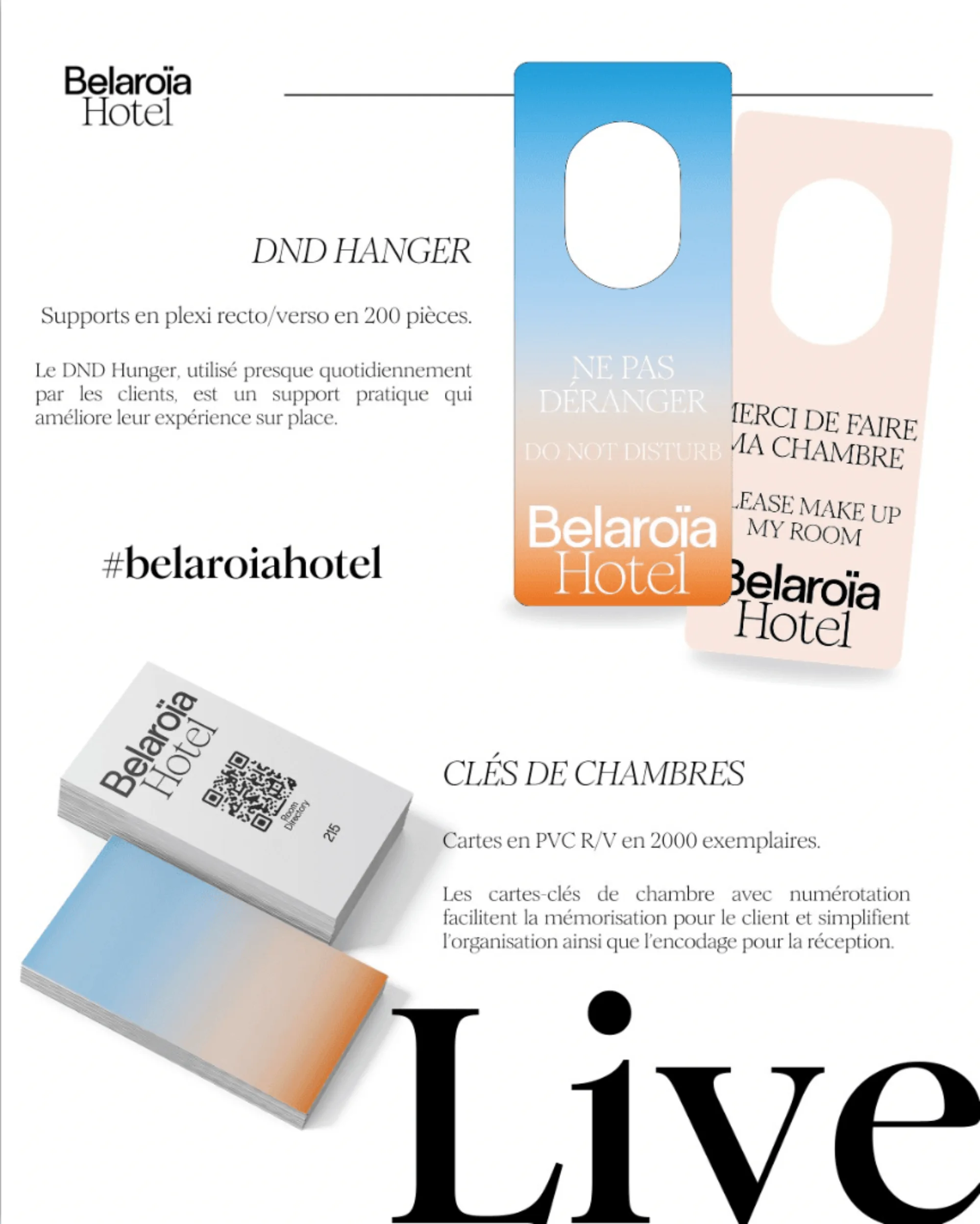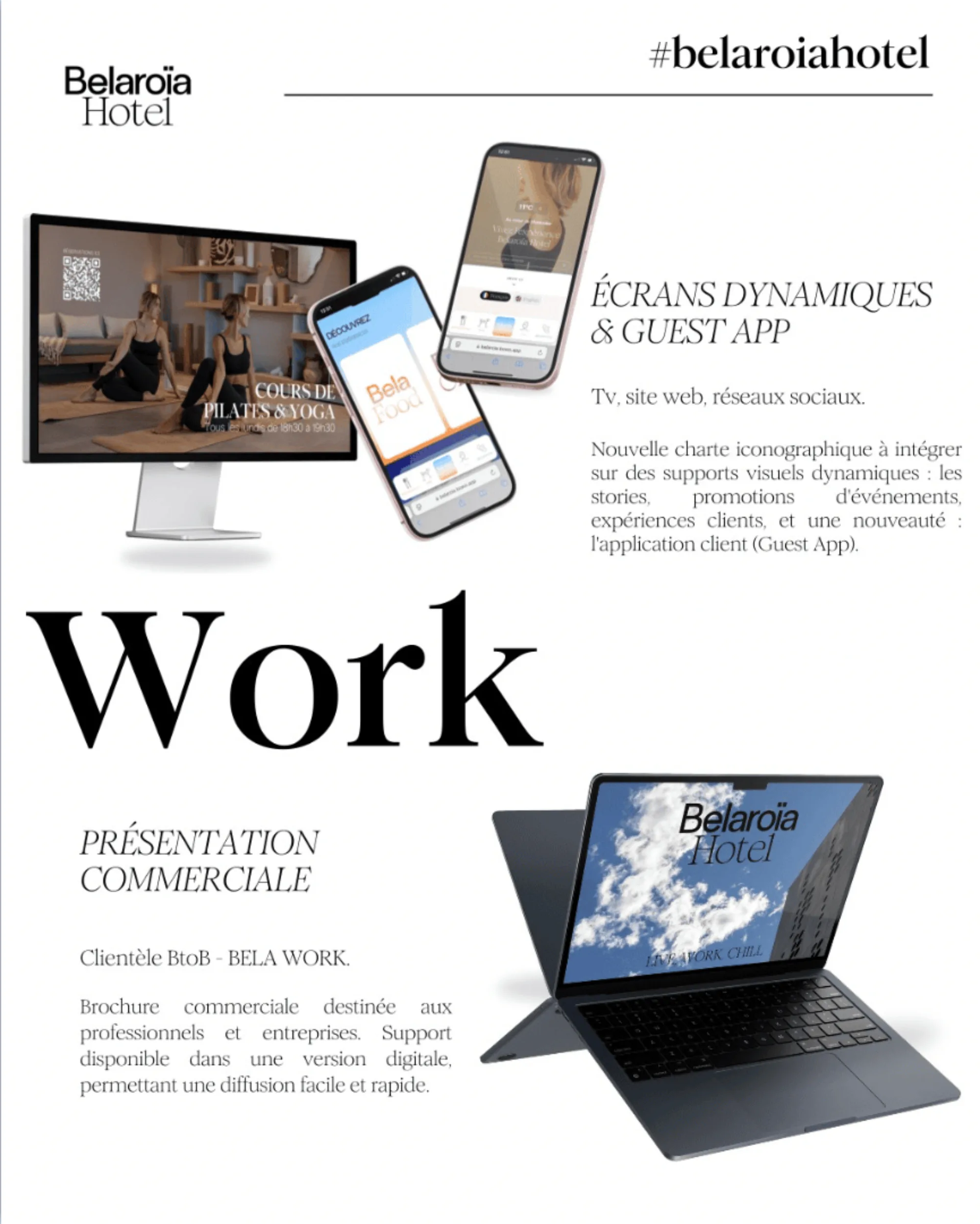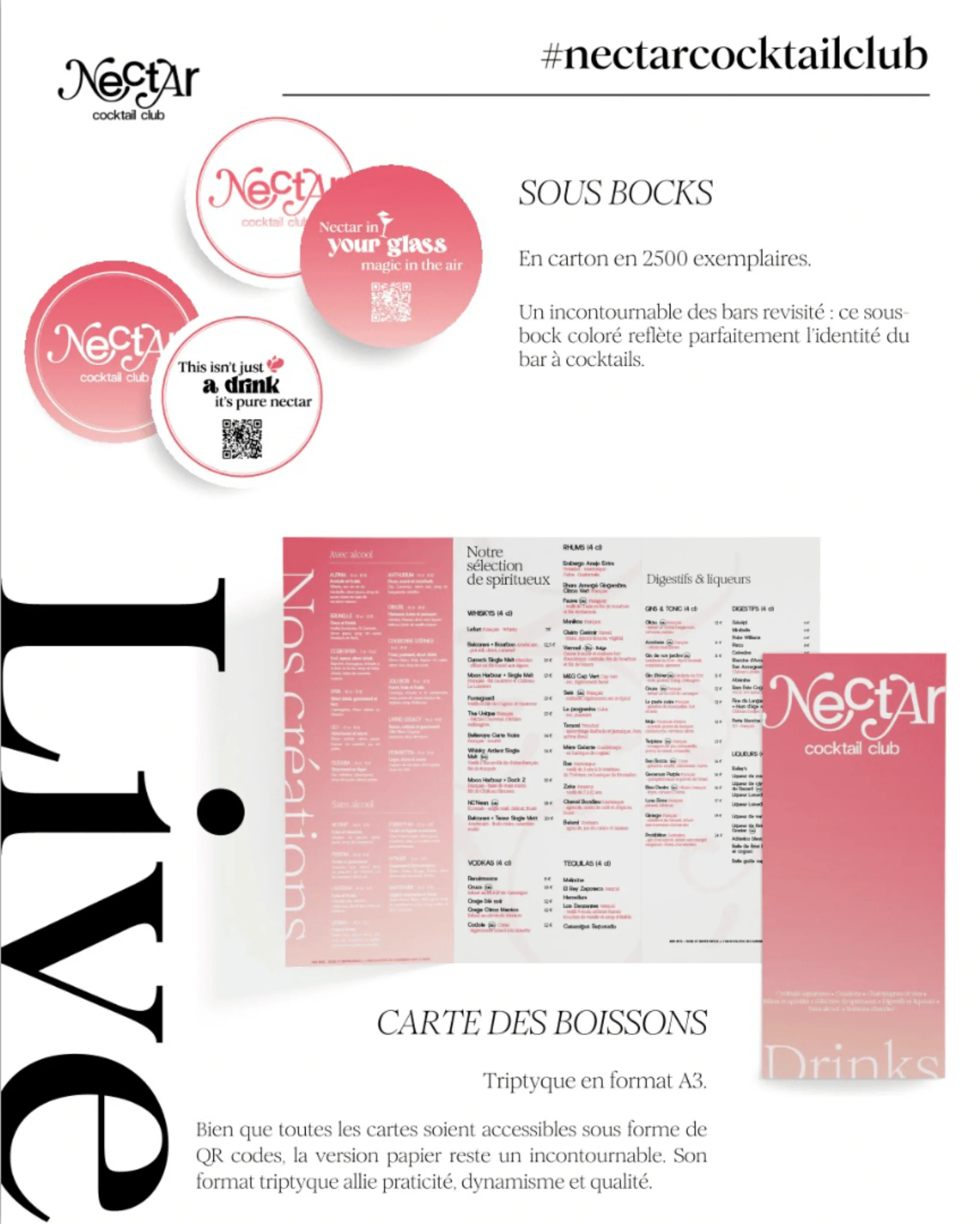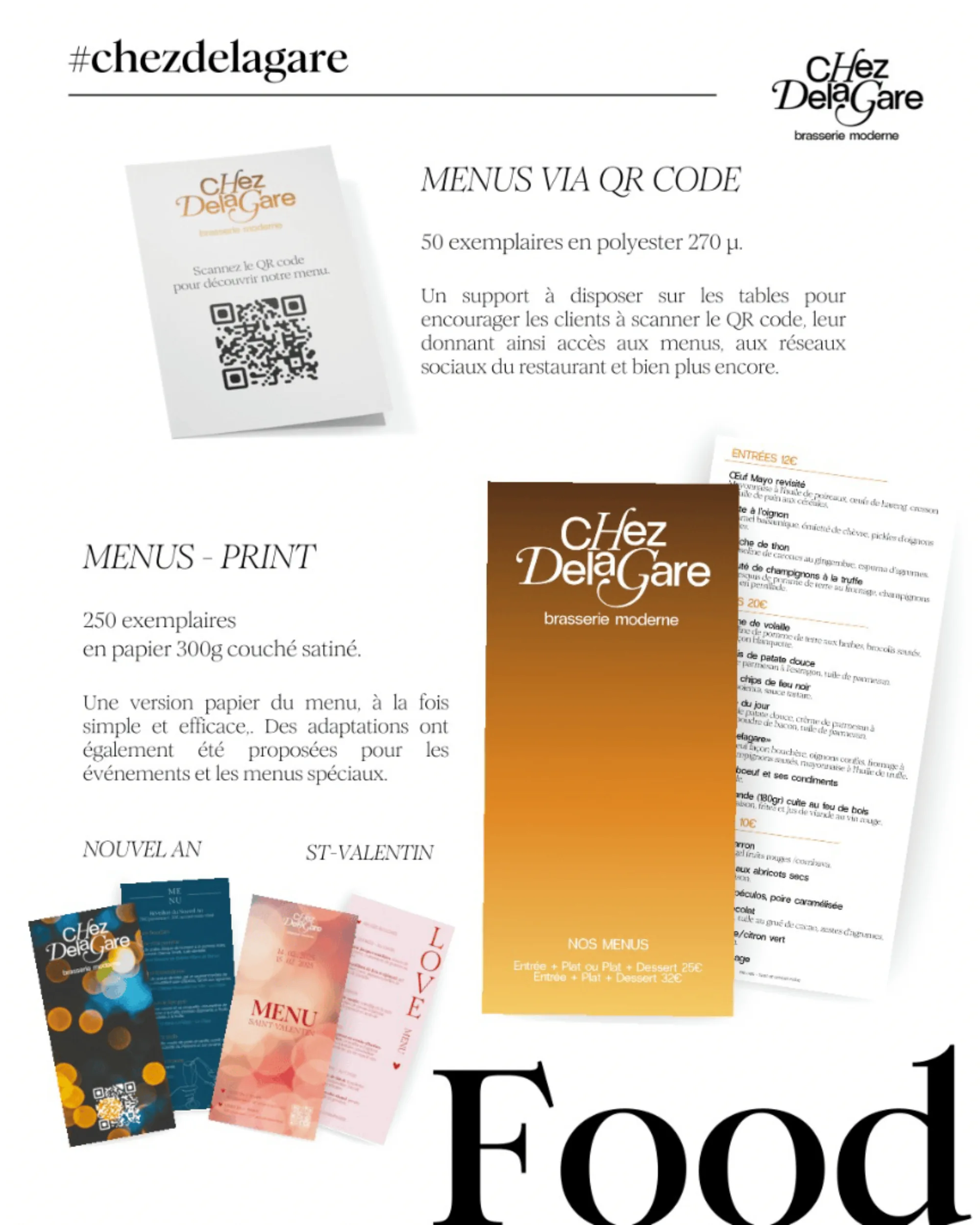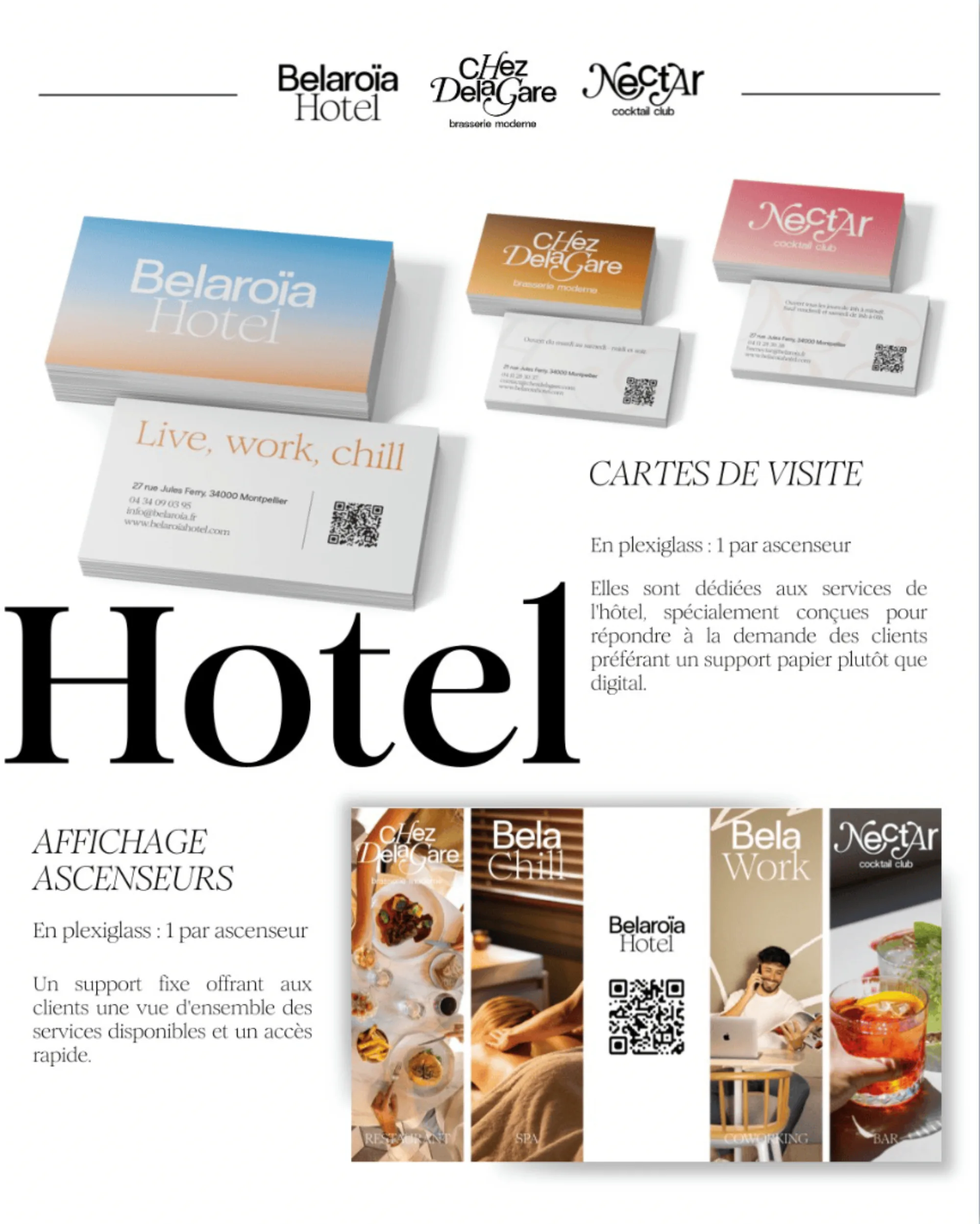It's much more demanding. It's about creating a lasting emotional impression, an aligned end-to-end experience, a recognizable universe.
And it's not a marketing luxury—it's become a necessity. Because the hotel industry faces very specific challenges: intense local competition, difficult customer loyalty in the age of OTAs, and a customer experience to preserve despite labor shortages.
But today, too much content on the subject recycles the same advice: "take care of your visual identity," "work on your storytelling," "be present on social networks." We're not here to rehash these obvious points.
Here, we're going to talk concretely about what it means to build a strong hotel brand when you're not a hotel chain:
by understanding the specifics of hotel branding,
by identifying mistakes to avoid,
by following an actionable method, inspired by hotels and groups that have succeeded.
The numbers are clear: more than 90% of travelers consider the "mood and feel" of a hotel as an important criterion in their choice. Reviews on Hotels.com mentioning the term "vibe" have even increased tenfold in 1 year.
Branding is no longer an option. It's a lever for differentiation and sustainable growth.
Hotel Branding: Strong Specificities Compared to Classic Branding
Hotel branding doesn't follow the same rules as classic B2C branding. In hospitality, the brand is not limited to a conveyed image: it is experienced. And that changes (almost) everything.
1) The hotel product is a lived experience
In marketing, it's common to say that you don't sell a product, but an emotion. Rolex doesn't sell watches: they sell status. Apple sells creativity. Red Bull, self-transcendence.But in these examples, the emotion is projected around the product.In hospitality, the experience is not peripheral: it is the product itself. You sell a place that people live in, an ambiance that they feel, memories that they take away.
The emotion is not limited to a brand image or storytelling: it is built in the real experience, during the stay, through every tangible detail. Thus, the memory and emotional imprint generated are much more powerful than in most other industries.
👉 Direct consequence: the brand is not only at play in communication. It is forged in the lived experience: the smell of the lobby,the ergonomics of check-in, the smile at reception, the quality of sleep...
2) Hospitality is a sector of Human Relation(s)
Human relationships mean emotion, spontaneity, unpredictability. And in a hotel, these relationships play out daily — at reception, at breakfast, in a hallway, sometimes in less than 10 seconds.
It's your teams who embody your brand, every day, facing your customers. Every receptionist, server, room attendant is a link in your promise. An impeccable website design will never compensate for a cold reception or a casual attitude.
Your brand lives in human interactions.
It depends on:
the tone used at reception,
the attention paid to requests,
the ability to personalize services
the way to excuse a delay or celebrate a birthday.
3) Hospitality is Ultra-Dependent on Digital Image
Today, your brand is judged even before your customers have crossed your threshold.
Booking, TripAdvisor, Google Reviews... Every photo, every comment, every rating contributes to shaping the perception of your establishment.
Even if you take care of your communication, the experience perceived by your former customers becomes your first lever — or your first brake.
👉 Hotel branding is therefore not controlled solely by the hotelier: it is co-constructed with your customers, online.
4) Hotel Branding Must Manage the Coexistence Between Direct Sales and OTA Distribution
On your official website, you are the master of your image. But on OTAs (Booking, Expedia, etc.), your brand is diluted, compressed into standardized templates, alongside dozens of competitors.Your challenge then becomes to:
remain identifiable,
preserve your personality,
entice, even in a standardized environment.
👉 Effective hotel branding knows how to exist and seduce, even in constrained formats.
5) Creating a Brand that Unites All Establishments
To all these challenges, others are added that are more specific to groups that manage several establishments (without being chains). Notably that of finding the delicate balance between:
identifying a common DNA that transcends the different properties,
while leaving each establishment its personality and local anchoring.
The trap would be to standardize excessively or, conversely, to create a patchwork without coherence.
👉 Successful branding knows how to federate without erasing specificities.
What If Nike Opened a Hotel?
What's the difference between a logo and a brand? It's a question that Seth Godin — famous American marketer — has addressed in a striking way, and that we wanted to share with you.
To illustrate his answer, he proposes this exercise. Let's take Nike, famous sports equipment manufacturer, and Hyatt, famous hotel chain. Two giants in their sectors.
Imagine that Nike opens a hotel.
Without having seen a single image, we can already guess the atmosphere. A vibrant, dynamic place, serving performance and boldness. An environment that breathes energy and the "Just Do It" spirit down to the smallest details, from reception to spa.
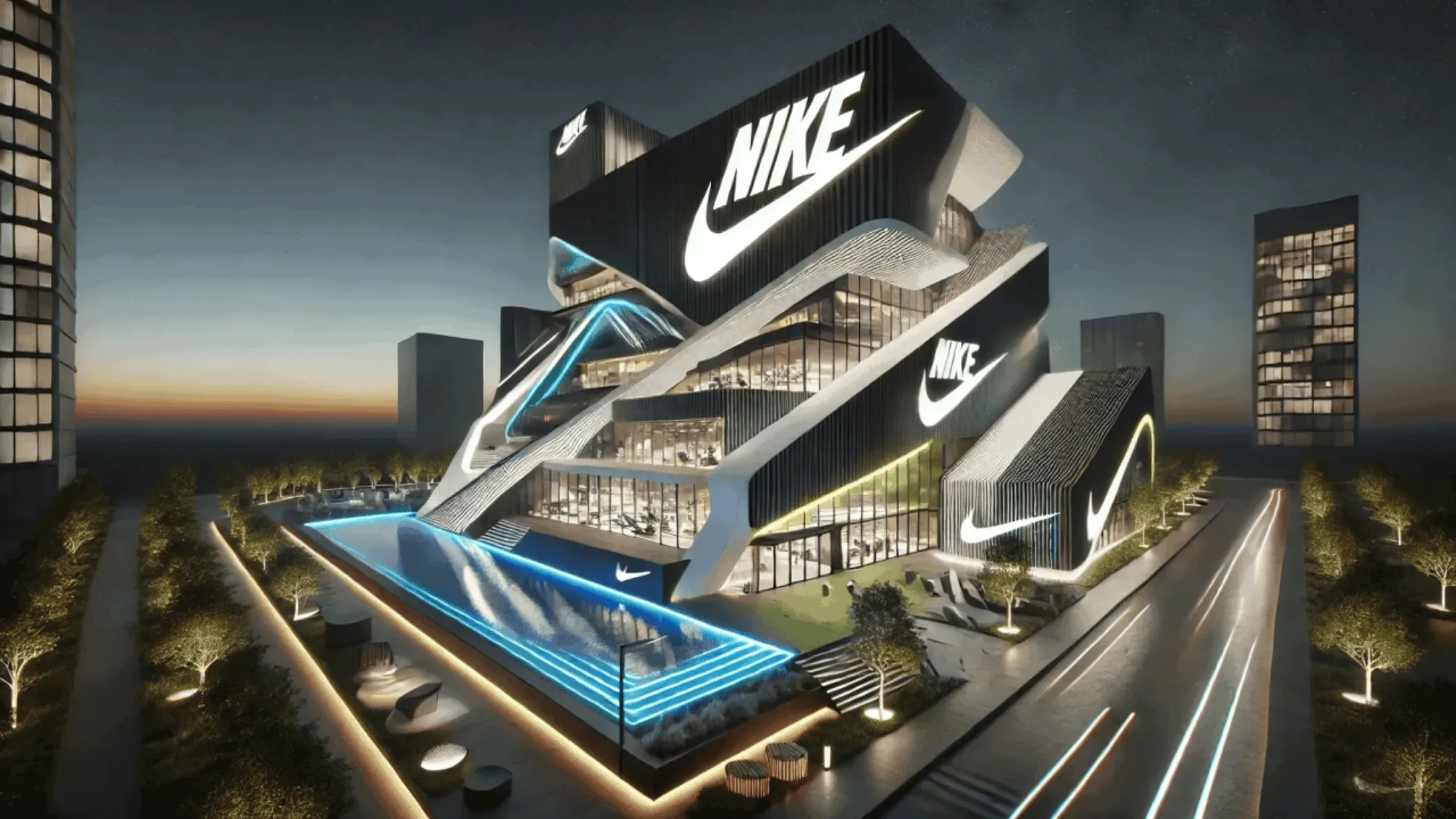
We could even imagine the staff uniforms: loose-fitting clothes that inspire movement, the opposite of traditional hotel rigidity.
If they launched a pair of sneakers, honestly... Would you have any idea of their design? Their style? Probably not.
Not because Hyatt is not a recognized brand — but because, for many, its identity is perceived as more functional than viscerally emotional.
Hoteliers, you're looking to build a brand: get out of commodity!
And Seth Godin concludes: "The value of a brand is the extra cost that your customer is willing to pay compared to a similar competing product. If they're not willing to pay more, then you don't have a brand."
The 5 Classic Hotel Branding Mistakes
Understanding the specificities of hotel branding is essential. But between theory and practice, certain traps remain frequent.Here are the 5 errors that most often weaken hotel brands.
Mistake #1 : Copying the big Groups
It's a common reflex, especially for marketing teams: wanting to be like Apple. Or like Nike. Or Burger King. Campaigns that pop, slogans that become cult, polished visual identities.
But here's the thing: they don't have Apple's budget. Nor Nike's teams. Nor the agencies that accompany Burger King.
And in hospitality, it's the same thing.
We tell ourselves that resembling the big groups is reassuring. Ultra-smooth design, generic messages, formatted standards.
But by trying to "look serious" or resemble others, we end up mostly becoming... interchangeable.
👉 Your strength is not in imitation. It's in what makes you unique: your DNA, your story, your local anchoring. And above all, in what large groups sometimes have difficulty reproducing: your creativity, your agility, your real proximity to your travelers.
Mistake #2: Having Successful Visual Branding, But an Inconsistent Customer Experience
Asserting a strong brand personality is good. But it still needs to be found in the real experience.
What good is working on an original graphic charter, an impeccable website, a carefully curated Instagram feed... if on-site, the experience is banal, impersonal, soulless?
👉 The most beautiful logo in the world will never compensate for a lived disappointment.
The brand is built in the alignment between what you show... and what your customers really experience.
Mistake #3: Underestimating the Importance of Teams in Brand Embodiment
Branding conceived in a meeting room, without involving the field, is doomed to remain theoretical. A strong brand doesn't come down from headquarters.
Your team is the first living media of your brand. It's in a smile, a spontaneous attention, an attitude that the experience takes shape. Your brand is built at the counter, at reception, at the spa, in real exchanges.
👉 Your collaborators should not only "apply" the brand: they must embody it.
Mistake #4: Having a Vague or Generic Message
"A warm welcome," "an exceptional setting," "personalized service"... These are promises that we read everywhere and that no longer mean anything.
👉 If you can't summarize your uniqueness in a clear sentence, neither can your customers.
A strong brand chooses a clear territory. It assumes it won't appeal to everyone.
Be careful, clarity is not perfection. It's knowing who you are, where you're going, and why you matter. It's also ensuring that everyone in the organization tells the same story.
To paraphrase Arnt Eriksen, brand strategist, here are 3 signs of a lack of clarity:
identity confusion: a brand that doesn't know why it exists (other than making money), that follows trends rather than creating them
disconnection with the audience: a brand that knows demographic data but ignores the real motivations or beliefs of its customers
fragmentation of the narrative: a brand that confuses its functionalities with its benefits, and its messages with its meaning.
How then to build this clarity? By asking yourself these few questions:
Could people imagine your brand in another universe?
Do all your collaborators tell the same story?
Do your customers choose you for the reasons you think?
Would someone miss you if your brand disappeared tomorrow?
Mistake #5: Forgetting to Cultivate the Post-Stay
The customer relationship doesn't end at check-out. A successful stay is a golden opportunity to create ambassadors.
Still, you need to continue to nurture the relationship after their departure:
Genuinely engaging loyalty programs,
Personalized messages,
Exclusive invitations,
Inspiring content...
👉 The post-stay is the moment when durable brand preference is built.
Read our article : The Marketing emailing guide in Hospitality
How to Build a Strong Brand Without Being a Giant: Key Steps
1) Deeply Understand Who You Welcome
Even before laying the foundations of your brand, one step is essential: knowing who you're addressing.Not just in terms of segments or country of origin. But in terms of lifestyles, expectations, values, deep motivations.
What really matters to them? Why would they choose you rather than another?
>>Discover 7 traveler profiles and their expectations in our White Paper "The Guide to Hospitality Trends 2025"
2) Define a Clear and Differentiating Brand Territory
Once your customers are well identified, comes the question of positioning. Not that of the market, but that of emotion. What emotion do you want them to feel when leaving your place? What should they keep in mind, tell their loved ones, associate with your name?Your brand starts there.
Take Lily of the Valley : their territory is crystal clear. Well-being, elegance, anchoring in nature. Their promise is clear and consistent — without trying to please everyone.
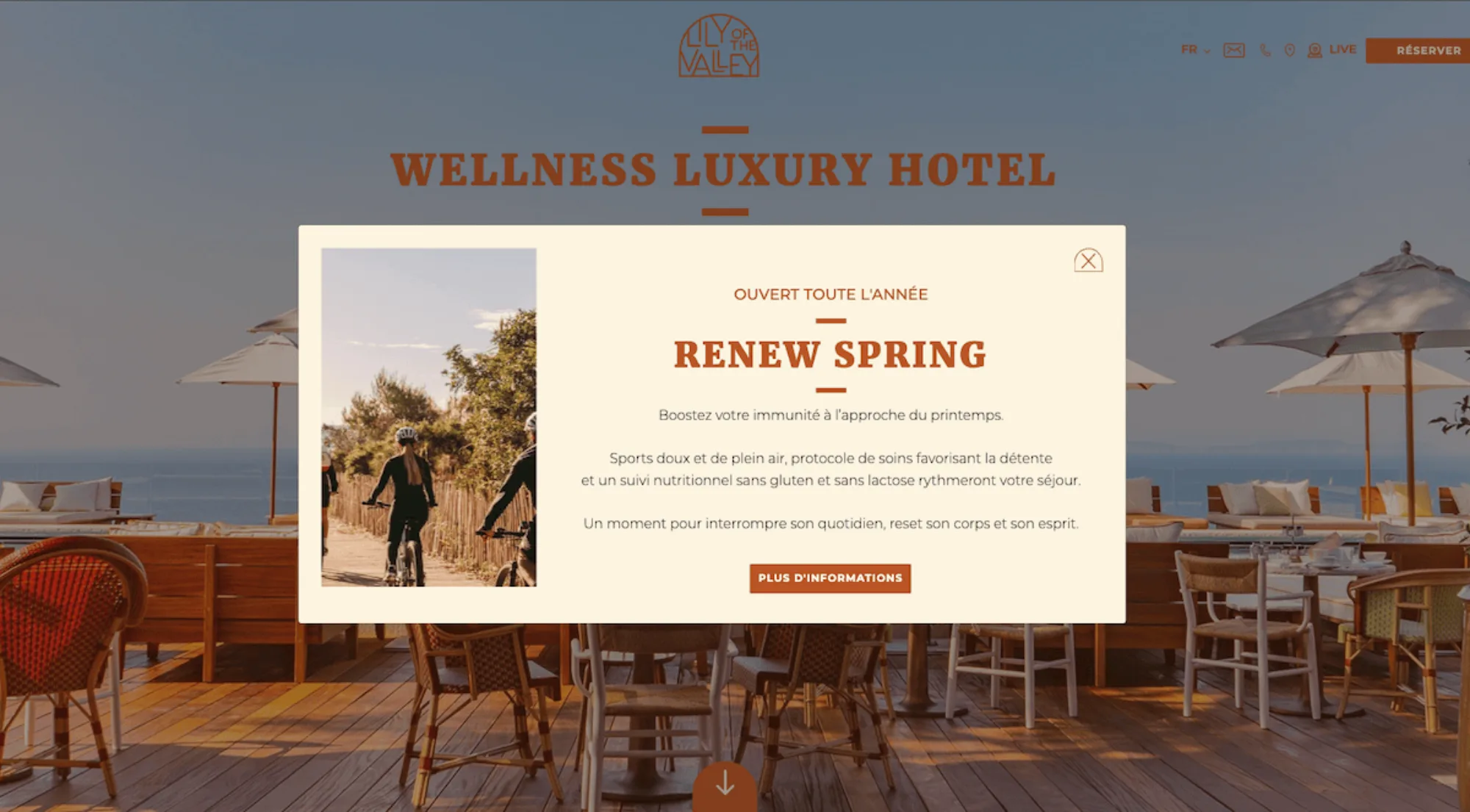
3) Co-Create DNA with Your Teams
The brand is not a subject reserved for marketing (or management). It is built with those who, every day, bring the experience to life.Organizing multi-team workshops (marketing, reception, F&B, housekeeping, sales, management...) is a key step.
Concretely, these workshops allow to:
cross perspectives between different professions,
bring out the brand's values,
confront internal and external perceptions,
identify what creates connection, attachment, difference.
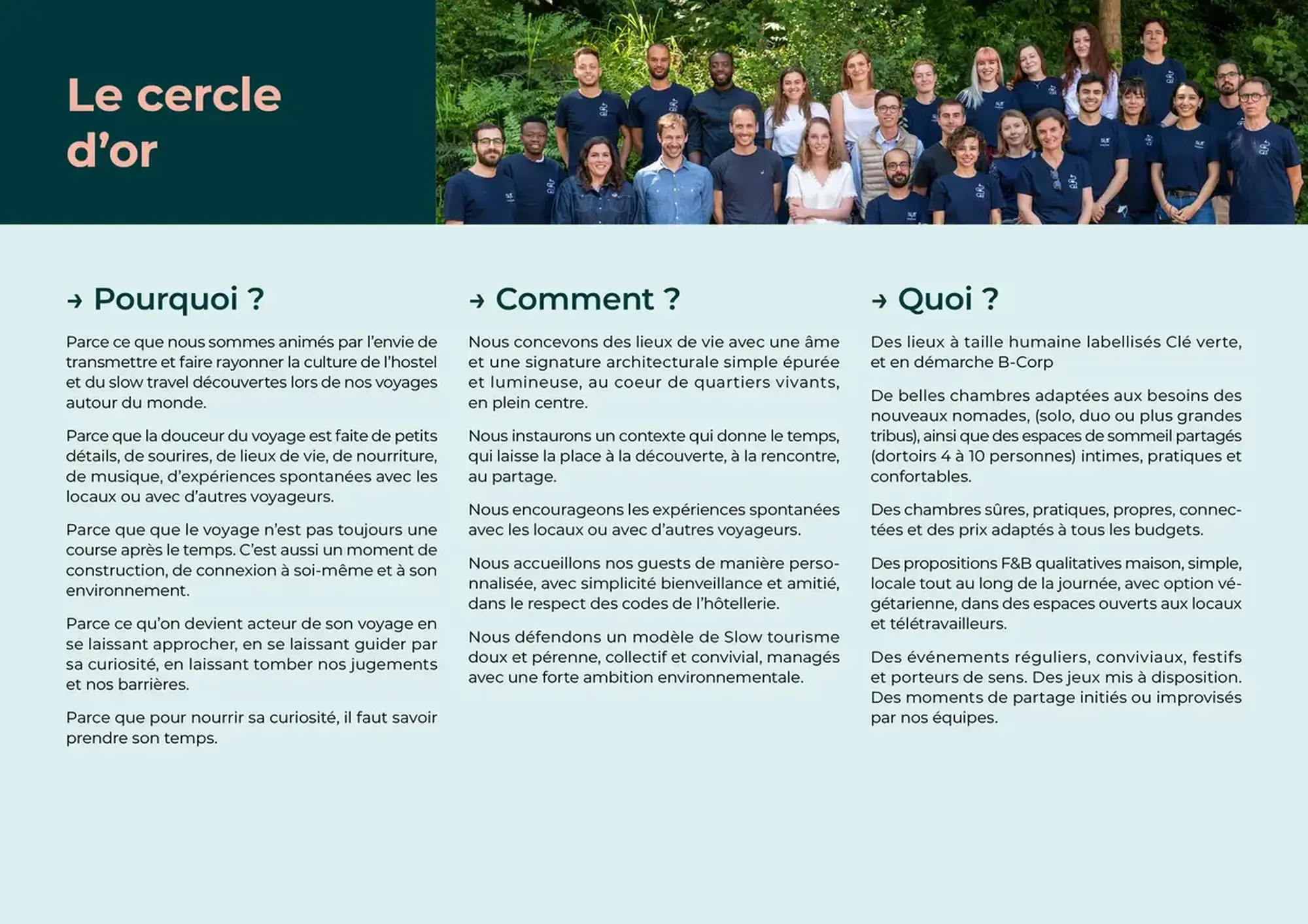
The goal is not to achieve consensus at all costs, but to bring forth a sincere vision, shared and consistent with the field experience. This is how SLO, accompanied by the Wild&Slow agency, successfully pivoted its brand by involving all employees in defining its new DNA.
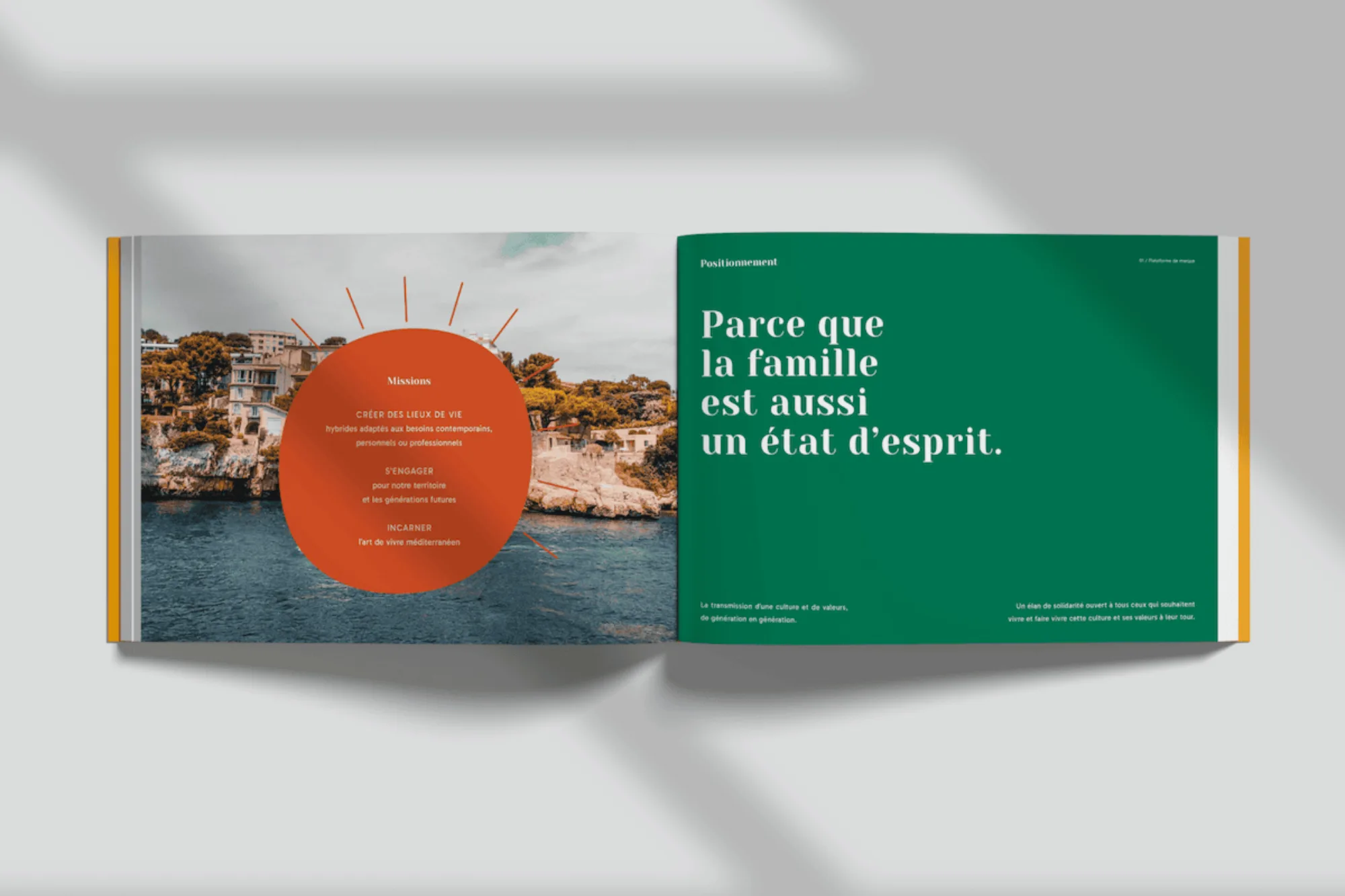
4) Formalize a Real Brand Platform
Not just a pretty PowerPoint presentation. A living platform that defines:Your vision
Your mission
Your values
Your customer promise
Your tone
Your visual and sensory universe
💡 Your editorial charter should be as solid as your graphic charter.
5) Bring the Brand to Life in All Touchpoints
Branding doesn't stop at the website.It is found:
- in the reservation confirmation email,
- in the playlist playing in the lobby,
- in staff uniforms
- in the elevator display,
- in the signage of common areas,
- in the room service menu,
- even in the way you share information about the breakfast.
And this applies to everything.
Find this LinkedIn carousel shared by Caroline Trouillet, communication manager.
6) Train Your Teams to Embody the Brand
You understand it, your staff is the first ambassador of your brand.
Create concrete operational guidelines, train in the values and gestures that embody your promise: this is what will transform your branding from a beautiful idea... to a real lived experience.
7) Be Ultra-Consistent Between Promise and Reality
It boils down to 1 sentence: "under promise, over deliver" (and not the reverse).No excessively retouched photos. No hollow promises about "ultimate luxury" when the experience is simply pleasant.
👉 Trust is the first wealth of your brand. And it is built on kept promises.
8) Intelligently Activate the Brand on Digital
Optimize your listings on OTAs: aligned photos, coherent storytelling, descriptions that bring the experience to life.
Use social networks not to post photos of rooms, but to tell real stories, show your teams, your happy customers, your little details that make the difference.
Produce social proof content: testimonials, customer experience videos, team focus.
SEO-wise, even if giants often dominate the results, all is not lost. According to a recent study conducted by Eskimoz, 74 % of searches in tourism are now made without a brand name.
Travelers don't search for "Marriott hotel" or "Accor." They search for a "hotel with pool in Annecy," a "boutique hotel Paris 9e," a "romantic spa in Deauville." They're not looking for a sign. They're looking for an ambiance, a promise, an experience.
And it's a unique opportunity for independent hotels and small groups: if your brand is clear, singular, well-positioned, you can capture customers who weren't looking for you... and who will choose you.
👉 Belha Collection, accompanied by Eliophot, has worked on this omnichannel coherence. Take a look.
Recap: Best Practices for Building a Strong Hotel Brand (Without Being Marriott)
- Define a clear and differentiating brand territory
- Co-create DNA with your teams
- Formalize a real brand platform
- Take care of each touchpoint
- Train teams to embody the brand
- Be consistent between promise and reality
- Adapt your digital presence to your personality
- Produce social proof content
- Optimize your OTA listings
- Tell stories on social networks
- Take advantage of searches without brand names
| At Bowo, we are convinced that the customer experience is the best showcase for a hotel brand. Our Guest App and our CRM precisely allow to extend this experience: 👉 personalized communications, coherent journey, post-stay engagement. If your brand deserves better than a simple logo, let's talk about it. |
Similar articles
